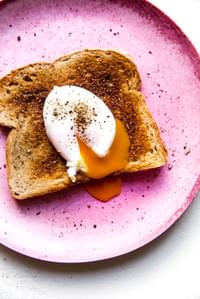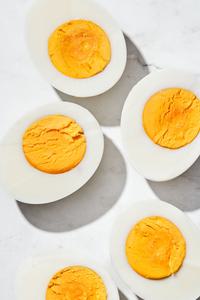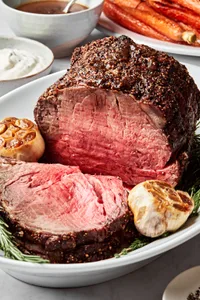Perfect Poached Eggs Are Easier Than You Think
After tons of trial and error, we’ve decided (at last) that this recipe is hands down the very best way to poach eggs. A few simple steps and you end up with warm, firm whites and golden, runny yolks every time! If you’ve had bad experiences making poached eggs in the past, you’re not alone! They’re not incredibly complicated — truly, if you can hard-boil an egg you can poach one — but making poached eggs is a bit of a science and you do have to follow the directions closely and work carefully. We prefer to make free-form poached eggs instead of cooking them in an egg poacher, because the texture is better and it’s one less set of dishes to wash. For perfectly poached eggs you’ll need:
Cold eggs
Vinegar
Simmering water
A slotted spoon
A fine mesh strainer

How to Poach an Egg
This simple, straightforward, nearly-foolproof method for making poached eggs works for making up to four poached eggs at a time. You can even make a few batches of poached eggs a day ahead of time if you’re cooking for a crowd.
Bring the water to a very low, gentle simmer.
Crack the egg into a fine mesh strainer over the sink, and shake the strainer to get rid of any loose whites. These looser, watery bits of egg white are what unfurl in the water and make those unattractive, wispy bits that drive us all crazy. Voilà! You’ve eliminated them before the egg has even touched the water!
Move the strained egg into a little bowl or ramekin. If you’re making four poached eggs at once, strain all of them (one by one) and place them into four bowls or ramekins so that you can more easily place them in the water at the same (or same-ish) time.
It’s showtime! Add the vinegar to the pot and rapidly stir the water with a wooden spoon creating a vortex. Slip the egg carefully from the bowl or ramekin into the center of the water.
Let it cook for three minutes. If you’re cooking more than one, use your slotted spoon to adjust the eggs as they cook so that they don’t touch each other.
Use that slotted spoon to move the poached egg from the pan to a paper towel lined plate
Eat! Or, store the eggs in cold water in the fridge until you’re ready to use them.
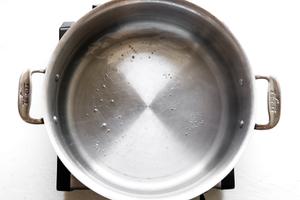
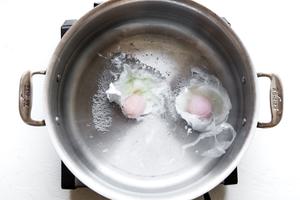
Can I Poach 2 Eggs at Once?
Yes! You can poach as many eggs as you want in one work session and store them in cold water in the fridge for up to 48 hours. When you’re ready to use the eggs, fill a bowl with super hot water from the tap (or you can drop them in boiling water for a very, very quick re-heat). Just be careful not to overcook the eggs as you warm them. A slightly room temperature egg with a perfectly runny yolk is better than one that’s overdone. One more important note: Try to buy the freshest eggs you can get your hands on! The fresher the egg, the better shape the white will hold as it poaches.
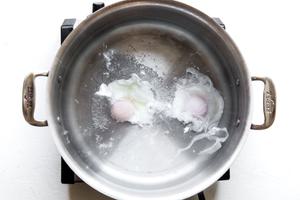
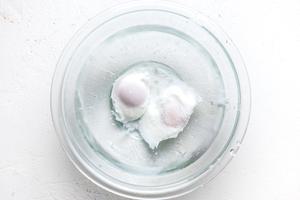
Benedicts And Beyond
Eggs Benedict is that one brunch menu item we love to order when we’re dining out. The best hollandaise sauce recipe seemed, for so long, to be one we didn’t dare make at home. We’re excited to say that we’ve cracked enough eggs to finally crack the code on making the best Eggs Benedict. Follow our guide How To Make Eggs Benedict for a perfect benny every time. A perfectly poached egg is also great atop a grain bowl like our Buddha Bowl, and noodles like these Spicy Chili Crisp Noodles with Salmon. Your next round of avocado toast would also be the perfect vehicle for a perfectly poached egg.
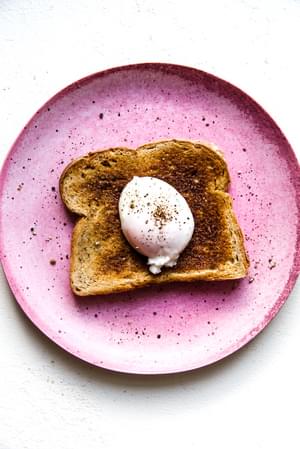
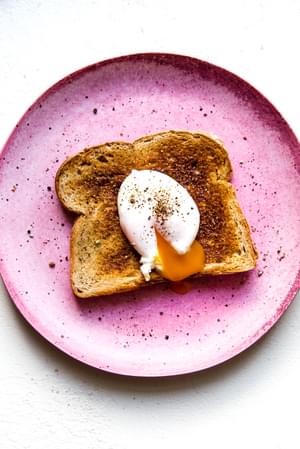
Tools You’ll Need:
More Classic Egg Recipes To Try
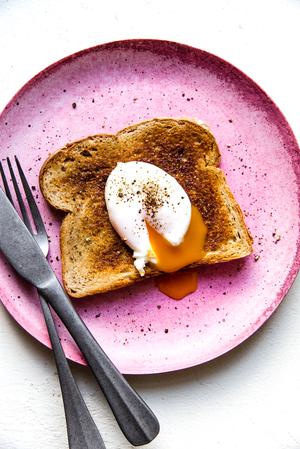
Poached Eggs for All!
Once you’ve got the hang of this poached egg recipe, you’ll be making even more room for poached eggs in your life—serving Eggs Benedict at your next brunch, making them on the fly to turn that simple green salad into a French bistro-style dinner, you name it! And we want to hear about your every success! Share a photo and tag us on Instagram using @themodernproper and #themodernproper so that we can see your stuff! Happy eating!
